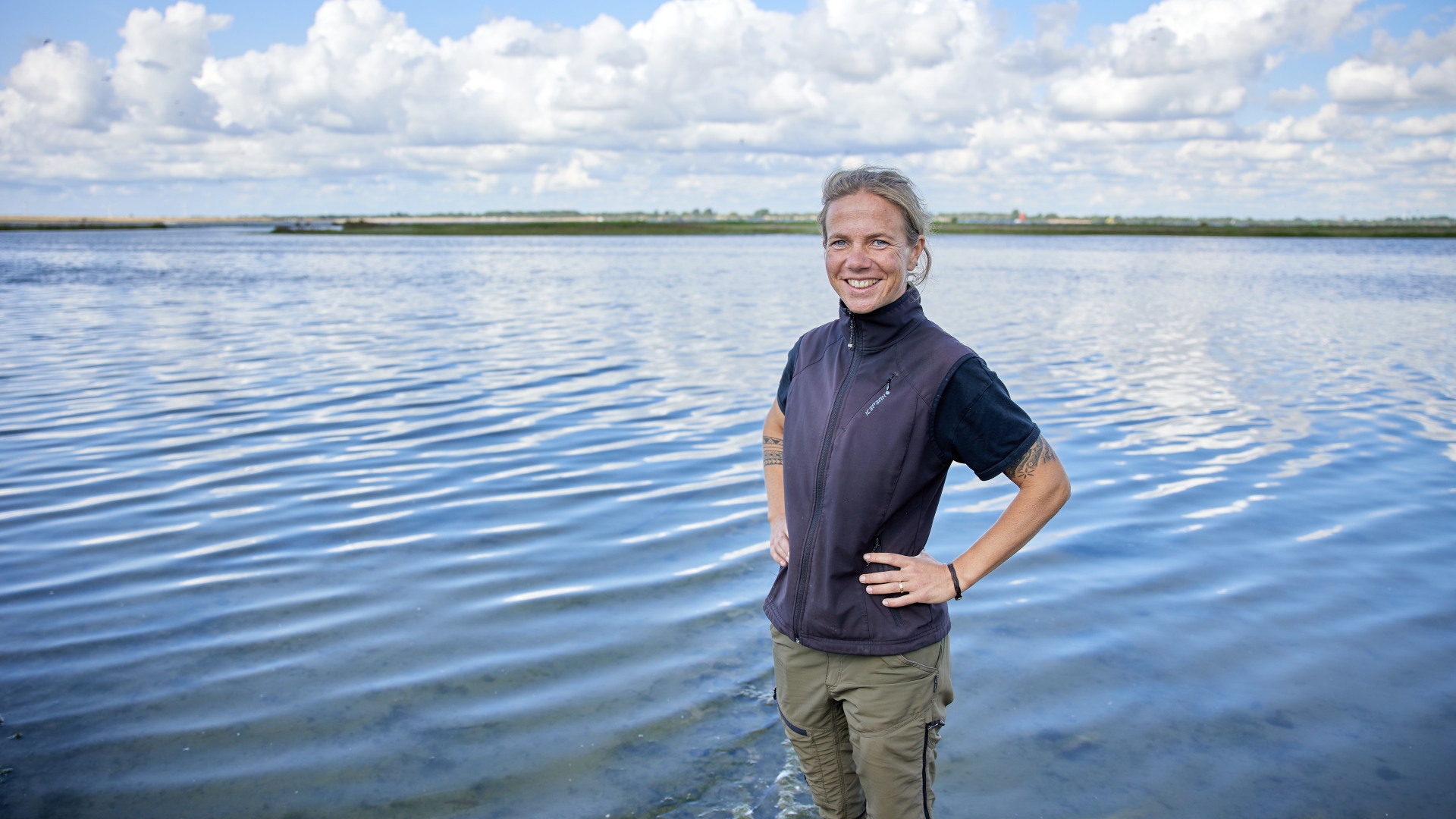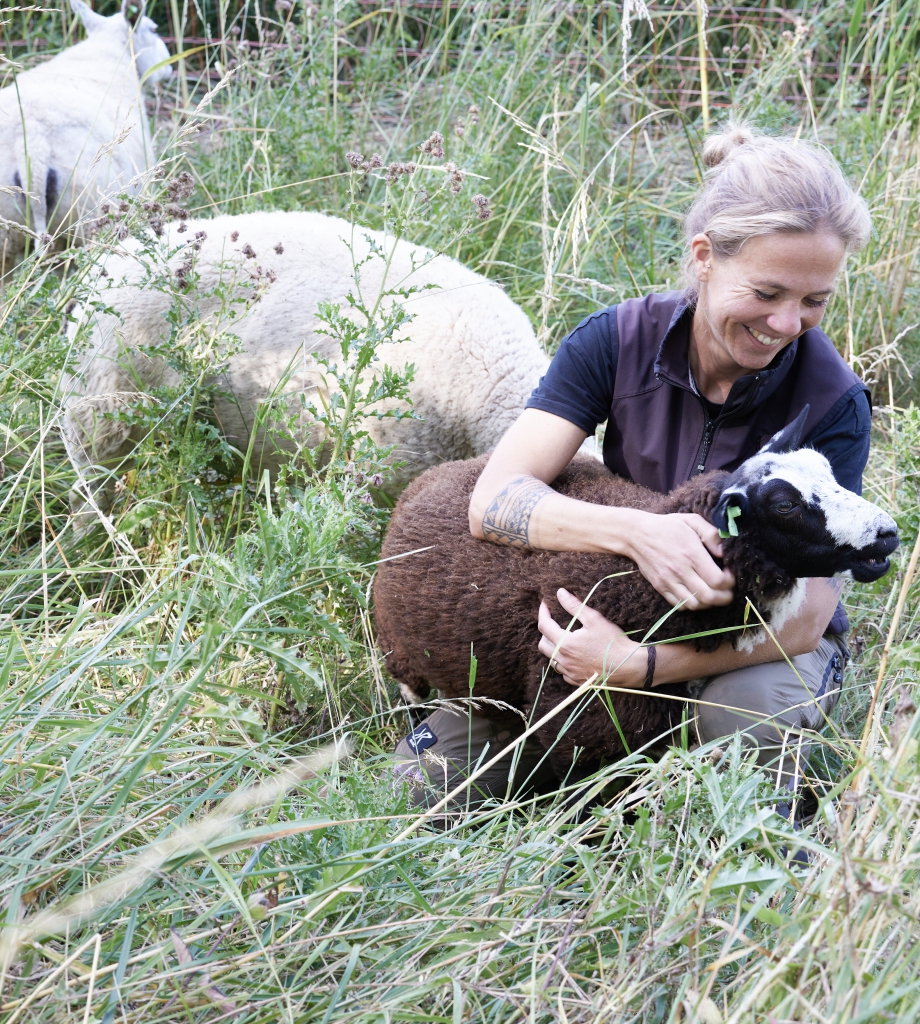Stephanie van der Wel

In 2017, Stephanie van der Wel (born 1985) took over her parents’ farm in Melissant in the province of South Holland. She and her partner, Ingrid, have transformed the former dairy farm into a hotspot for biodiversity. Stephanie manages 130 hectares of natural land and has 20 cows, 50 sheep and 80 lambs. The farmhouse’s enormous flower garden is Ingrid’s work.
Stephanie’s parents bought the farm in 1991 and relocated their dairy farming business there. As a young girl, Stephanie dreamed of becoming a farmer, but that desire faded when she reached her teens: “I was more interested in going out and had no serious thoughts about my future. After secondary school, I trained in healthcare. When I was 19, my father sold the dairy cows and that was a wake-up call. I realised I wanted to be a farmer. My father said, ‘If that’s what you really want to do, go and work for someone else first.’ I quickly finished my thesis and found a job with an organic goat farmer. He taught me a lot about farming. My father eventually gave up dairy farming altogether in 2005 and shifted to doing contract work for other farmers. At the end of 2017, I took over the farm.”
Nature entrepreneur
Stephanie’s entrepreneurial adventure began with sheep, a handful of cows and two hectares of her own land next to the farm: “Agricultural land is too expensive for beef cattle so I lease 130 acres from Natuurmonumenten [the Dutch organisation for the preservation of the Netherlands’ natural and cultural heritage]. I work on this nature reserve together with another organic farmer. We use grazing and mowing to support the flora and fauna. For example, we leave strips of land untouched for the butterflies, bees, birds, insects, deer, hares and so on. I’ve noticed that my cows and sheep have very varied grazing patterns. It’s good to see that, in addition to grasses, they also eat willow leaves, plantain and sorrel, for example.”


Stephanie has been farming organically since 2020. “In the early years, I sold the lambs to the trade with no idea where they were slaughtered and sold. If you farm animals for meat, you know they’ll be slaughtered eventually. But I don’t want my animals being dragged all over the world like the animals on the ship got stuck in the Suez Canal. I’ve chosen to take care of these animals, so I want to have some control over the whole process, from start to finish. I looked for a short supply chain and ended up with De Groene Weg. The animals are born here on the farm and then they’re put out to graze on the nature reserve until they mature. The sheep only come back to the farm for a few weeks in the lambing season. They get a little organic concentrate feed in the barn, but otherwise they only eat grass and hay from the nature reserve. When the animals are ready for slaughter, De Groene Weg comes to collect them. They’re slaughtered, processed and sold in the Netherlands.”
Barn owls
“My partner, Ingrid, comes from the gardening sector,” Stephanie says. “She’s created a huge flower garden, partly inspired by the gardens of the famous Dutch garden designer Piet Oudolf. We converted the former cold stores into a garden café, where we serve coffee, tea, cakes and snack platters at weekends. And we’re also a wedding venue. The garden café is called ‘De Ûûlestee’, a Frisian dialect word that can be translated as ‘owlstead’ or ‘owl farm’. The farm had no name when my parents bought it. We hunted through the archives and talked to an old local resident, and it turned out that this used to be a tenant farm and tenant farms were not named. But the locals called this farm ‘de ûûle’ – the owl. The grain that used to be grown here attracted mice and they attracted barn owls. We still have a few barn owls now. We leave the barn window open so they can fly in and out.”
Caring about animals
Stephanie is completely in her element as a natural farmer: “Nature and adventure suit me and I really care about animals. Each animal has its own personality, and I get to know them as I work with them. That’s beautiful to me.” Nature, livestock, the flower garden and the garden cafe – for Stephanie, it’s all interlinked: “The good hay from the nature reserve is used as animal feed and the poorer-quality hay is used as bedding in the barn. The raw manure goes back onto the land and boosts the soil ecosystem. The flower garden provides shelter for insects, including many butterfly and moth species. When the flowers die back, we leave them where they are to provide food and shelter for the birds in winter. We plant trees and make brush piles to create more cover on the land. Barn swallows nest in the barn and I see woodpeckers in our yard, mostly green woodpeckers and sometimes great spotted ones. Everything here supports something else.”
